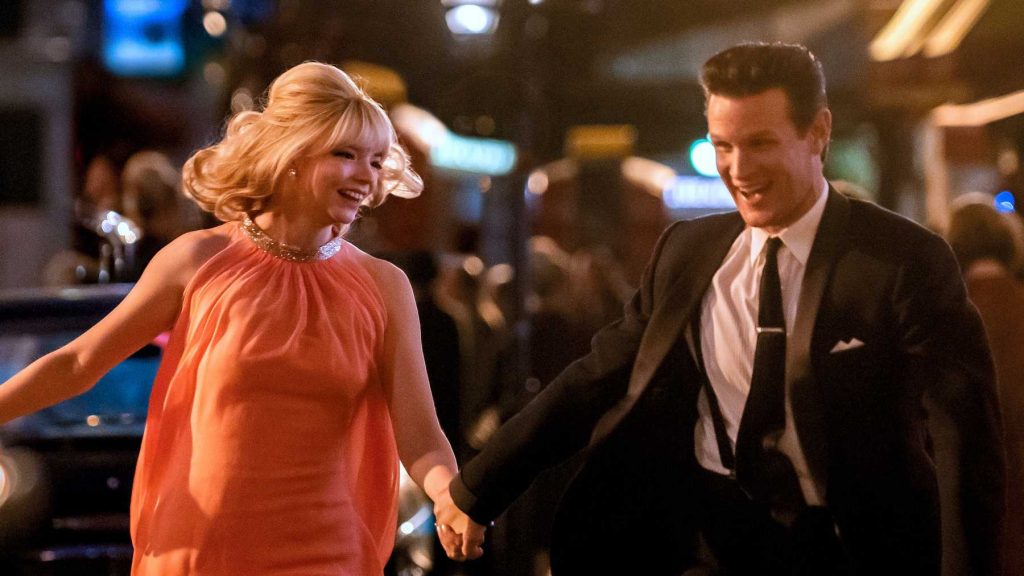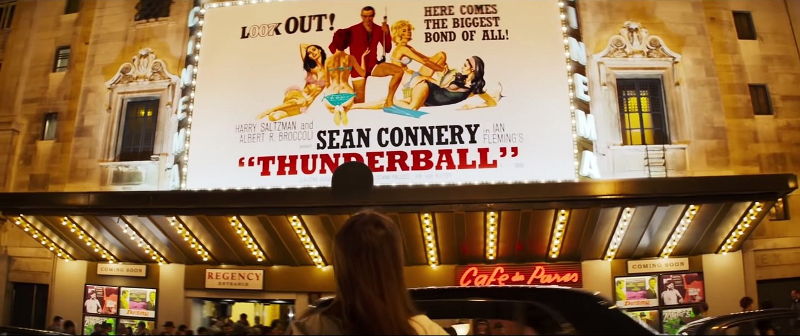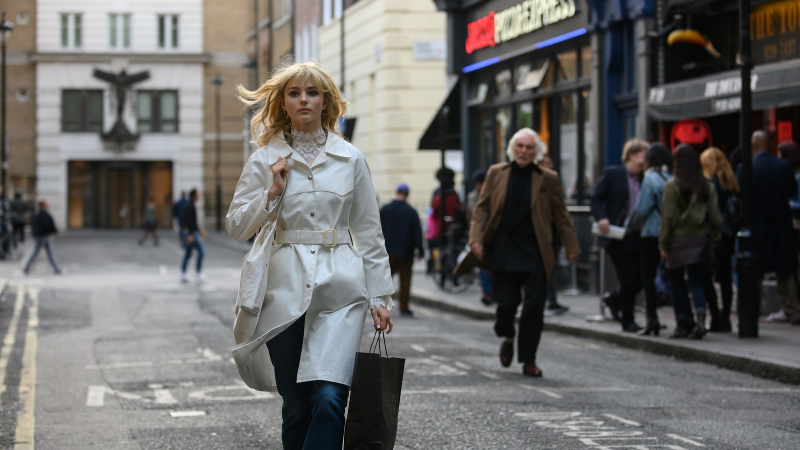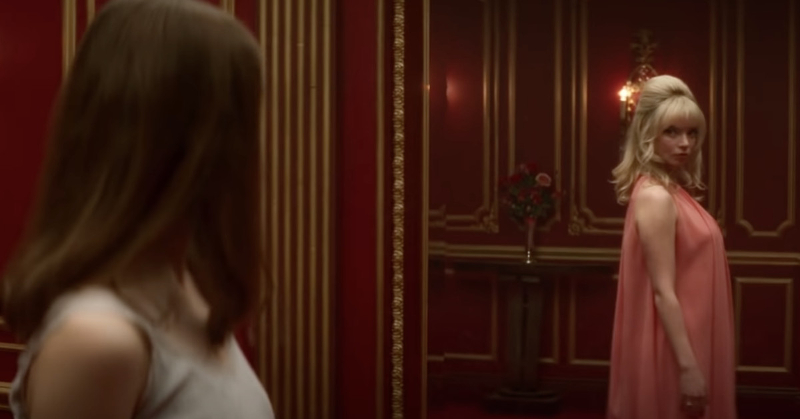Director – Edgar Wright – 2021 – UK – Cert. 18 – 116m
*****
The dream life of a present day fashion student takes her to the Soho of 1965 where a young woman is trying to make it as a singer – in cinemas from Friday, October 29th
Dreaming of being a fashion designer, 1960s-obsessed Eloise (Thomasin McKenzie) leaves the house of her gran (Rita Tushingham) in Redruth, Cornwall after getting accepted as a student at the London College of Fashion. Charlotte Street halls of residence turn out to be an introvert’s nightmare, with parties replacing sleep at night and extrovert roommate Jocasta (Synnøve Karlsen) taking an immediate dislike to Eloise. The morning after spending her first night wrapped in her duvet in the corner of a party room, sleep deprivation almost prevents her getting to roll call on time. As it is, she looks foolish when her name is called, and she asks, “what’s the question?”

Eloise chances on a room to rent notice that’s fallen on the floor below a notice board and secures the room at the top of 8 Goodge Place from eccentric, ageing landlady Miss Collins (Diana Rigg) whose rules include “no smoking, no male visitors”. No sooner has Eloise moved in, however, than she starts having strange dreams which take place in the Soho of 1965 in which she appears as both herself and singer wannabe Sandie (Anya Taylor-Joy), pursuing dreams of success through charmer Jack (Matt Smith).
At college, Eloise embarks on designing sixties-based dresses. Shopping for clothes, she falls for a £375 coat. She dyes her hair blonde. In need of greater funds, she goes looking for work an immediately lands a barmaid’s job at a local pub where the landlady (Margaret Nolan) warms to her and one of the regulars (Terence Stamp) follows her to offer warnings she doesn’t want to hear… Also in the mix is John (Michael Ajao), a friendly student who looks out for Eloise and becomes her romantic interest.

Wright skilfully juggles his timelines between present and 1965 and his main protagonist between Eloise and Sandie. In Eloise’s dreams, she looks in the mirror and sees Sandie is reflected in a series of mirrors descending a club staircase as Sandie and so on. Within specific shots, for instance dancing with a partner, Sandie changes to Eloise and back again, so we are Eloise, but sometimes we are Eloise as Sandie. It may sound hokey, but it works well enough here.
Sixties Soho is portrayed as a murky netherworld to which bright young things bring their dreams only to be lured into vice – streets, nightclubs and little else. Eloise’s first dream narrative starts with her duvet expanding into an alleyway opening on a cinema marquee showing Sean Connery as James Bond in Thunderball (Terence Young, 1965) complete with original artwork.

The Bond connection doesn’t stop there: among the cast’s sixties icons are Bond girls Diana Rigg (On Her Majesty’s Secret Service, Peter Hunt, 1967) and Margaret Nolan (Goldfinger, Guy Hamilton, 1964), both of whom sadly passed in 2020. A slightly more tenuous connection is Rita Tushingham, whose numerous onscreen appearances include The Knack… And How To Get It (Richard Lester, 1965), for which the score was written by John Barry, composer of some 11 or 12 Bonds – all the ones with memorable music including OHMSS and Goldfinger, the number depending on whether you include the three reused OHMSS cues in No Time To Die (Cary Joji Fukunaga, 2021).
The other major sixties icon here is Terence Stamp, an actor so enigmatic that his presence tends to dominate the screen whenever he appears on it. This film is no exception. He tries to talk to Eloise on barmaid duty and elsewhere, but she won’t have it, being convinced that he’s one of the bad guys. That doesn’t really explain his concern when she’s trying to avoid him, however. She nearly steps into a car doing so, an accident she almost walks into several times in the film. So much so that you keep waiting for her to get run over.

Meanwhile, the younger cast members, particularly McKenzie and Taylor-Joy, while they may lack the baggage of long careers, prove more than adequate to the task of carrying the film.
The whole is not without is flaws (can it really be that easy to get a bar job just like that in central London?, why does the final reel descend into such obvious horror movie tropes and clichés?), but works well enough as an enjoyable, feel good fantasy which I’m sure is what its director intended. Wright has asked reviewers not to reveal any of the film’s surprises. There are a number, and they’re quite effective, so I sympathize. I hope the above is spoiler free. Be advised, the film has a dark side too. However, it’s a lot of fun and I have no hesitation recommending it for a good night out.
Last Night in Soho is in cinemas from Friday, October 29th. An accompanying, Edgar Wright-curated season London After Dark runs until Saturday, November 20th at BFI Southbank with many of the films also available on BFI Player. Also worth a look is this photo essay about Soho, Fitzrovia and Kensington locations then and now.
Trailer:
Footnote: After writing this review, and then looking at the trailer, I realised that quite a lot to which I specifically refer is in the trailer. That may be party because I was keen to avoid spoilers, which with this film limits quite heavily what you can say, and partly because the trailer was (for once) made with much the same intention (I’ve lost count of the ill-judged trailers that have ruined movies with spoilers over the years).
2021
UK Cinema Release – Friday, October 29th
BFI London Film Festival – Saturday, October 9th
